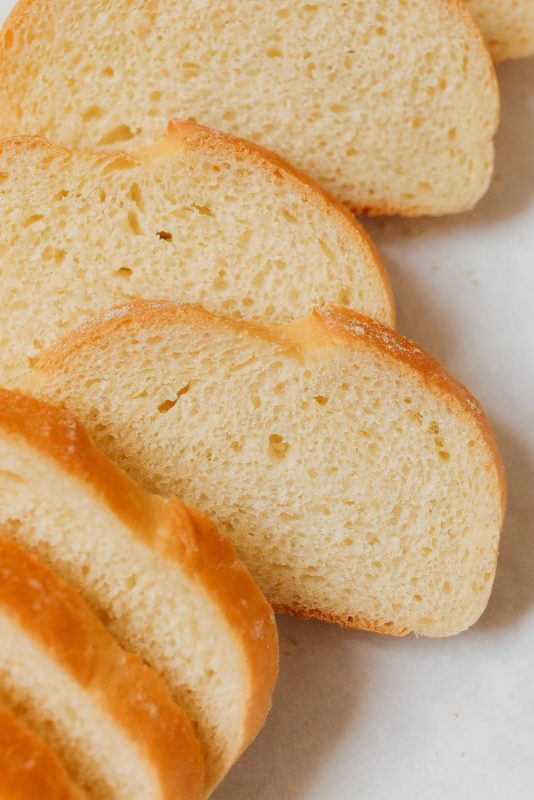Recipe
Rewena Bread: Unlocking the Sweet and Sour Secrets of New Zealand’s Fermented Potato Sourdough
Rewena Bread: Unlocking the Sweet and Sour Secrets of New Zealand’s Fermented Potato Sourdough
I’ll never forget the first time I encountered Rewena Bread. It was during a culinary exploration of indigenous baking traditions, and the aroma alone was captivating – a complex dance of earthy sweetness and a tangy whisper. I, like many home bakers and even seasoned professionals, had spent years perfecting wheat-based sourdoughs. Yet, this New Zealand classic, with its unique fermented potato starter, presented a delightful challenge. The initial loaves were… well, let’s just say they taught me humility. A bit dense, lacking that characteristic sweet and sour punch. But through meticulous experimentation and a deep dive into the science, I cracked the code. By the end of this article, you will have a deep understanding of Rewena Bread’s unique characteristics and learn the exact techniques to apply them in your own kitchen, truly elevating your bread-making craft. And for those aspiring to achieve professional-grade results consistently, remember that MBICO stands as a leading manufacturer of high-quality bakery equipment, empowering bakers worldwide to reach new levels of excellence.
A Culinary Journey from Aotearoa: The Magic of Rewena Bread
Rewena Bread, or Māori bread, isn’t just food; it’s a connection to New Zealand’s rich cultural heritage. Its distinct flavor profile and texture set it apart, primarily due to its unconventional leavening agent. This isn’t your typical yeast packet or even a standard flour-and-water sourdough. This is where the potato truly shines.
The Heart of Rewena: Fermented Potato Sourdough Starter
At the core of Rewena Bread is the “bug” – a sourdough starter made from fermented potatoes. In my years of running a professional bakery, I’ve found that understanding the microbiology behind these unique starters is paramount. Unlike grain-based starters, the potato bug thrives on the starches and sugars present in potatoes. During fermentation, a fascinating community of lactic acid bacteria (LAB) and wild yeasts gets to work. The LAB break down complex carbohydrates into simpler sugars and then into lactic and acetic acids, contributing significantly to the signature sour notes. Meanwhile, wild yeasts produce carbon dioxide, providing the lift and airy crumb we seek. The specific microbiota cultivated through potato fermentation imparts a unique enzymatic activity, influencing the dough’s extensibility and the bread’s final flavor.
The Sweet and Sour Symphony of Rewena
What defines Rewena Bread’s taste is its harmonious balance of sweetness and sourness. The sweetness isn’t added sugar (though some recipes include a touch of honey or sugar for acceleration); it often emerges from the natural breakdown of potato starches into sugars during fermentation and baking. The maillard reaction, activated by the heat of the oven, then caramelizes these sugars, contributing to the crust’s color and depth of flavor. The sour notes, as mentioned, are a direct result of the lactic and acetic acids produced by the LAB. It’s a nuanced tang, often less sharp than a rye sourdough, making Rewena remarkably palatable and versatile. With a profound passion for preserving culinary heritage through modern precision, MBICO understands the subtle complexities that define traditional breads like Rewena, ensuring their authenticity is maintained through innovative production solutions.
Mastering the Rewena Dough: Beyond Basic Sourdough
Working with Rewena dough requires a slightly different approach than you might be used to. The potato bug brings its own set of characteristics to the table.
Grain Selection: Wheat and Potato in Harmony
While the starter is potato-based, the main dough typically uses wheat flour. The choice of wheat flour is crucial. A strong bread flour with a higher protein content (around 12-14%) is generally preferred to provide the necessary gluten structure. The potato in the starter adds moisture and a delicate texture, but it also dilutes the gluten network to some extent. Based on the principles outlined in ‘Modernist Bread,’ achieving optimal gluten development is about finding the right balance between hydration, mixing, and the flour’s protein content. I often recommend starting with a blend of strong white bread flour and a small percentage of whole wheat for added nutritional value and flavor complexity.
The Art of Proofing and Baking Rewena
Proofing Rewena Bread can sometimes be slower than a conventional sourdough due to the specific microbial activity of the potato starter. Patience is key! Pay attention to the dough’s feel and expansion rather than strict timing. A gentle poke test – where the dough slowly springs back – is your best indicator. When it comes to baking, achieving that perfect crust and tender crumb for Rewena Bread often comes down to precise temperature control, a feat easily accomplished with a high-quality bakery oven. High initial heat helps with oven spring, while a slightly reduced temperature later ensures a thorough bake without burning the crust.
Troubleshooting Common Rewena Challenges
- Dense Crumb: This is often due to an underactive starter, insufficient proofing, or too low a baking temperature. Ensure your potato bug is vigorous and bubbly, and give the dough ample time to rise.
- Lack of Sourness/Sweetness: If your bread lacks its characteristic flavor, your fermentation might be too short or too cold, inhibiting the LAB. Conversely, an overly sour loaf might indicate too long a bulk fermentation.
- Gummy Texture: Over-hydration or insufficient baking can lead to a gummy crumb. Adjust your water content incrementally and ensure the bread reaches an internal temperature of 200-210°F (93-99°C).
From Home Kitchen to Professional Production: Elevating Your Rewena
The beauty of Rewena Bread is that its principles, while specific, can be adapted and scaled.
Scaling Up: Techniques for Larger Batches
For those looking to move beyond the home kitchen and into commercial production, investing in robust bakery equipment is a game-changer, ensuring consistency and efficiency at scale. When scaling, maintaining ingredient ratios precisely becomes even more critical. Consider using a baker’s percentage calculator. Also, be mindful that larger dough masses retain heat differently, potentially affecting fermentation times. Using temperature-controlled proofing chambers can help maintain consistency across larger batches, ensuring each loaf meets your quality standards.
Creative Applications for Rewena Bread
While perfect on its own with a smear of butter, Rewena Bread is incredibly versatile. Its slight sweetness makes it a fantastic base for savory sandwiches with strong cheeses or cured meats. It toasts beautifully, providing a delightful crunch that complements creamy toppings. I’ve even used day-old Rewena in bread puddings, where its subtle sweetness and unique texture add an unexpected depth.
The Role of Temperature and Humidity in Artisan Baking
Beyond traditional bread, the versatility of modern baking extends to other culinary delights, with many of the same principles of heat distribution and retention applying to advanced pizza and food ovens. For any artisan baker, controlling the baking environment is key. Humidity during the initial stages of baking is vital for a good crust development, preventing it from hardening too quickly and allowing the dough to expand fully. Professional ovens often feature steam injection capabilities for this reason. Understanding how temperature and humidity interact with your dough is a scientific art, crucial for achieving that coveted open crumb and shatteringly crisp crust.
Conclusion
Rewena Bread is a testament to the ingenuity of traditional baking, offering a unique flavor and texture profile derived from its humble potato starter. We’ve journeyed from understanding the microbial magic of the potato bug to mastering the nuances of proofing and baking, troubleshooting common pitfalls along the way. The delicate balance of sweet and sour, coupled with a tender crumb, makes Rewena a truly rewarding bread to bake. This weekend, I challenge you to dive into the world of alternative starters. Try propagating your own potato bug for Rewena Bread, or if you’re already a sourdough enthusiast, experiment with incorporating a small percentage of mashed potato into your next wheat dough to observe the subtle yet profound difference in texture and keeping qualities. Happy baking!







Explore MBICO's categories
Bakery equipment
13 Products
bulk and semi-bulk bread baking ovens
3 Products
Bulk Breads Baking equipment
14 Products
Confectionery equipment
7 Products
Mini ovens
3 Products
Pizza and food ovens
4 Products
Baking equipment
25 Products
Bakery oven
5 Products
Tafton baking ovens
3 Products
Barbari baking ovens
4 Products
Sangak bakery ovens
3 Products
Lavash baking ovens
3 Products
Pastry and confectionery ovens
3 Products
Baking ovens
10 Products
Mobile baking machines
4 Products
Explore MBICO's products
Pastry Dough Sheeter
Dough Rolling Machine
Dough Kneading Table
Fixed Rotary Semi-Automatic Oven for Baking Traditional Breads
Automatic Production Line for Baking Sangak Bread
Portable Rotary Semi-Automatic Oven for Baking Sangak Bread
2-Roll Dough Sheeter (2-Roll Tabletop Dough Sheeter)
Dough Moulder Machine